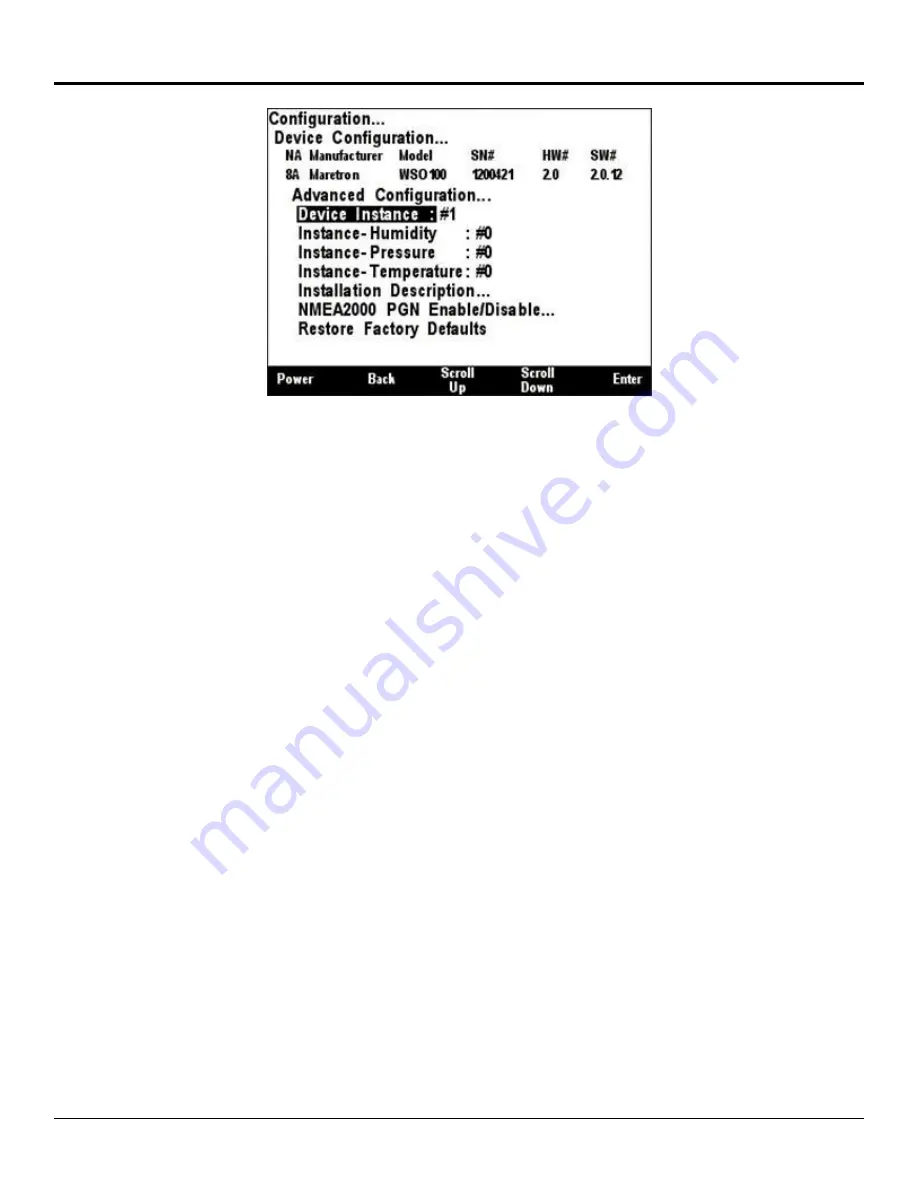
DSM570
User’s Manual
Page 198
Revision 1.8.3
Figure 225
– WSO100 Advanced Configuration Screen
6.31.1.1
Device Instance
This entry allows you to program the NMEA 2000 device instance for the unit. You usually will not
need to
modify the default value of “0” unless you have multiple units on the network. Device instance
is always used in the Wind PGNs.
6.31.1.2
Instance
– Humidity
This entry allows you to program the NMEA 2000 device instance for the humidity transmitted in PGN
130313. You usually will not need to modify the
default value of “0” unless you have multiple humidity
sensors on the network.
6.31.1.3
Instance
– Pressure
This entry allows you to program the NMEA 2000 device instance for the air pressure transmitted in
PGN 130314. You usually will not need to modify the defau
lt value of “0” unless you have multiple
pressure sensors on the network.
6.31.1.4
Instance
– Temperature
This entry allows you to program the NMEA 2000 device instance for the temperature transmitted in
PGN 130312. You usually will not need to modify the default
value of “0” unless you have multiple
temperature sensors on the network. Note that the TMP100 module also generates these PGNs.
6.31.1.5
Installation Description
This entry allows you to modify the NMEA 2000 installation description text strings. You can enter
any information you like here, such as the date the unit was installed, or the location in which it was
installed, for later reference. Tools such as Maretron N2KAnalyzer allow you to view these values
later.
6.31.1.6
NMEA2000 PGN Enable/Disable
The WSO100 Ultrasonic Wind and Weather Station transmits a number of NMEA2000 PGNs which
can be turned on or turned off by the DSM570 display. For the vast majority of installations, the
factory setting is appropriate, but if it becomes necessary to disable one of the transmitted messages
















































